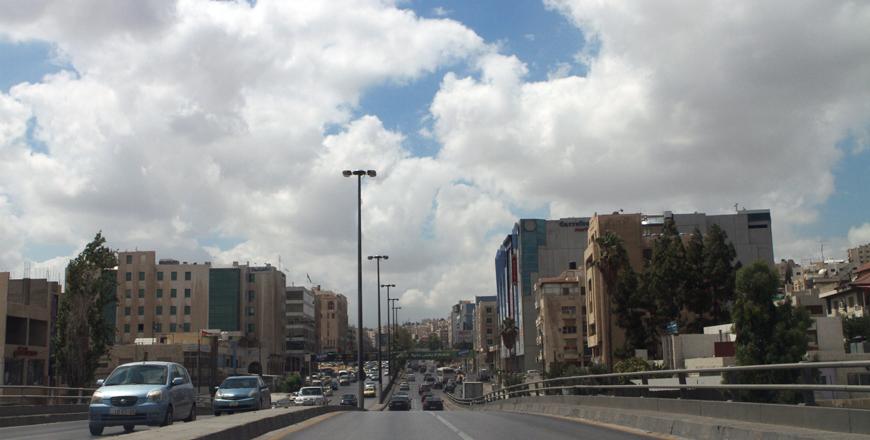You are here
Hot season officially begins with Sunday’s summer solstice
By Hana Namrouqa - Jun 21,2015 - Last updated at Jun 21,2015

Clouds hang over Amman on Saturday, a day before summer officially started on Sunday (Photo by Hassan Tamimi)
AMMAN — Sunday marked the first day of summer, during which the country is expected to witness a 0.5ºC increase in the average temperature of 31.8ºC, according to the Jordan Meteorological Department (JMD).
The summer solstice occurred at 7:39pm on Sunday, marking the longest day of the year at 14 hours and 14 minutes and the shortest night at 9 hours and 46 minutes, JMD Director General Mohammad Samawi told The Jordan Times.
“On summer solstice, the sun becomes vertical over the Tropic of Cancer, 23.5 degrees north of the Equator. Summer this year will last for 93 days, 15 hours and 42 minutes,” Samawi said.
Samawi noted that Monday and Tuesday will be the longest days for fasting during the month of Ramadan, standing at 16 hours and two minutes, while the shortest will be on the 29th day of Ramadan, at 15 hours and 48 minutes.
During the month, Muslims abstain from food and drink from dawn until after sunset.
“During hot weather in Ramadan, people are urged to avoid direct exposure to sunlight and should drink plenty of fluids following iftar,” Samawi noted.
Climate charts indicate that there is a 50-60 per cent chance for the Kingdom’s western region and mountainous areas to witness a 0.5ºC increase in the average temperature of 31.8ºC this summer, and a 40-50 per cent chance that desert areas will witness the same increase, according to the JMD director general.
“In addition, charts also indicate a slight possibility for the country to witness heatwaves this summer,” Samawi added.
He underscored that the intensity of hot spells depends on the route of air masses, explaining that strong heatwaves that push temperatures well above their annual averages usually come from the northeastern parts of the Arabian Peninsula, originating from India.
The meteorologist said the capital witnessed 61 heatwaves over the past 92 years, with the longest hot spell, which lasted for six days, occurring in July 1978.
The JMD announces a heatwave when temperatures soar five degrees above their annual average for a period of more than three days.
The country was last affected by a heatwave on June 27 last year, which lasted for four days, while the highest temperature ever recorded by the JMD in Amman was 43.5 ºC in July 2000 and in August 2010, according to department data.
Nationwide, the highest temperature ever recorded in mountainous areas was in Salt in August 2010, when it reached 41.6ºC, while the highest temperature in the badia and eastern plains was registered in July 2010 when it reached 47.2ºC.
In Aqaba, the highest recorded temperature reached 47.6ºC in July 1956 and August 1959, while in the Jordan Valley it was 48.8ºC in August 2010 at the JMD station in Wadi Al Rayyan.
Related Articles
AMMAN — Thursday marks the first day of summer, according to the Jordan Meteorological Department (JMD), which indicated that temperatures d
AMMAN — Tuesday marks the first day of summer, the Jordan Meteorological Department (JMD) said on Sunday. The summer solstice will occu
AMMAN — Friday marks the first day of summer, according to a Jordan Meteorological Department (JMD) statement, which added that temperatures
















